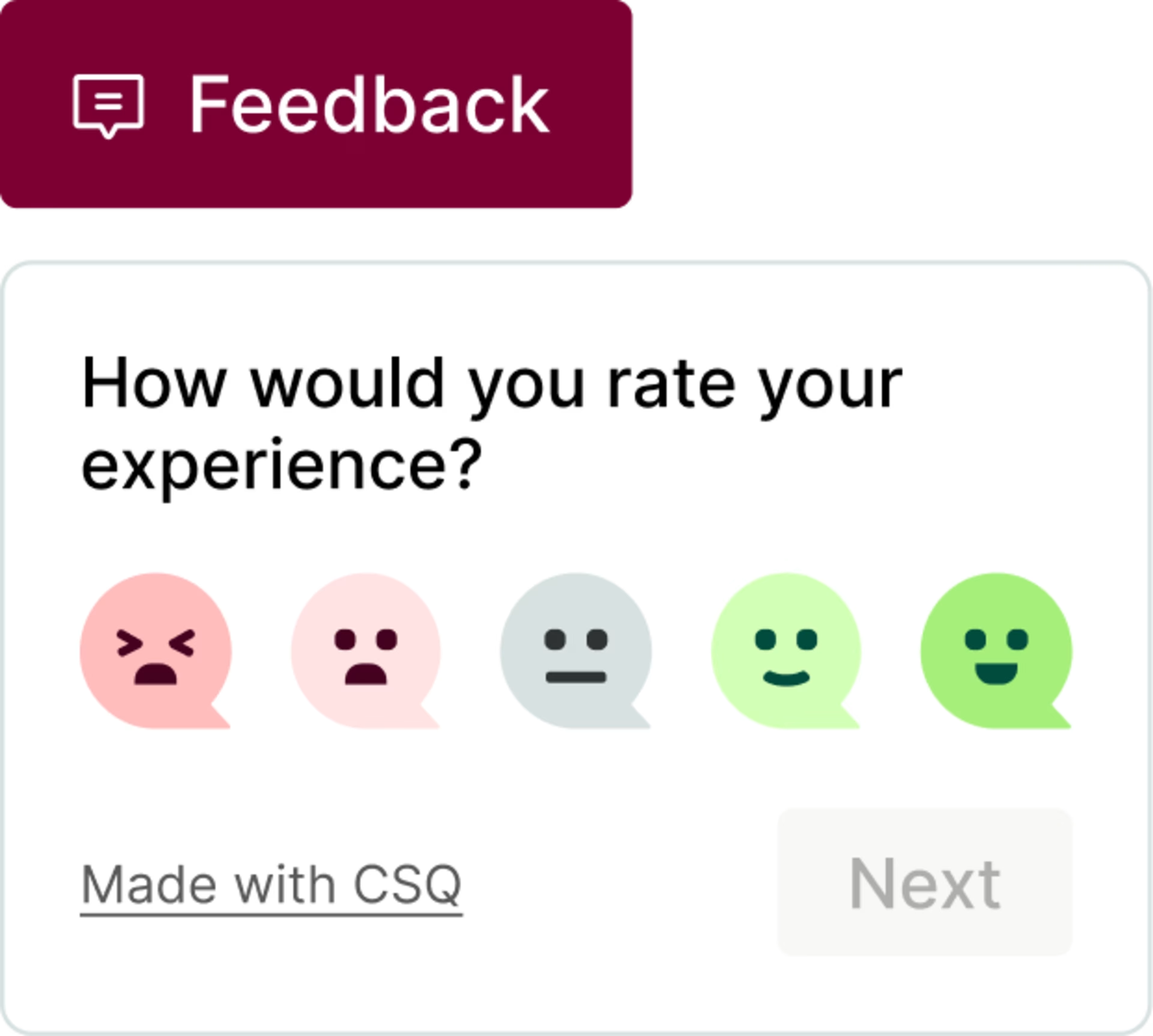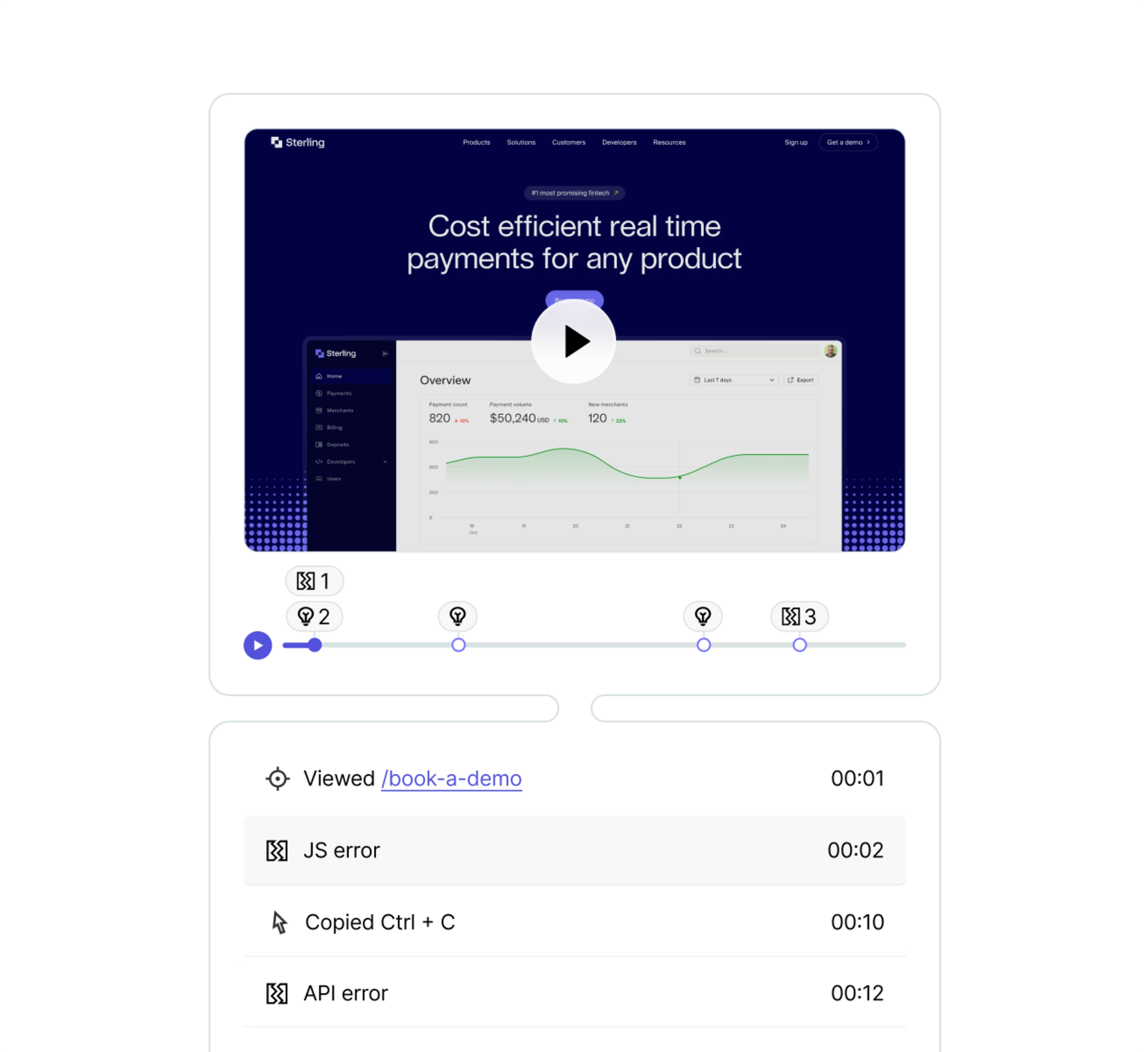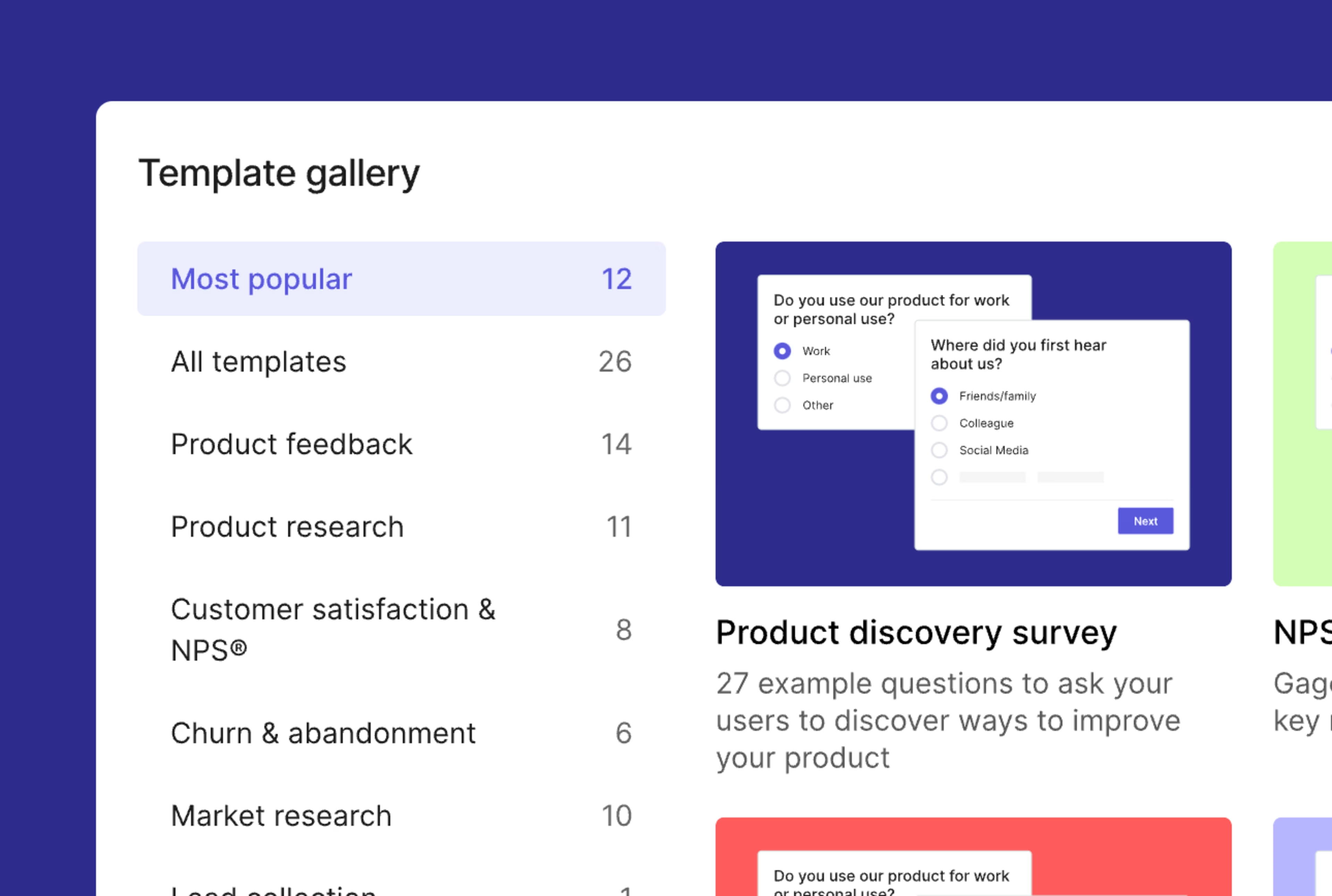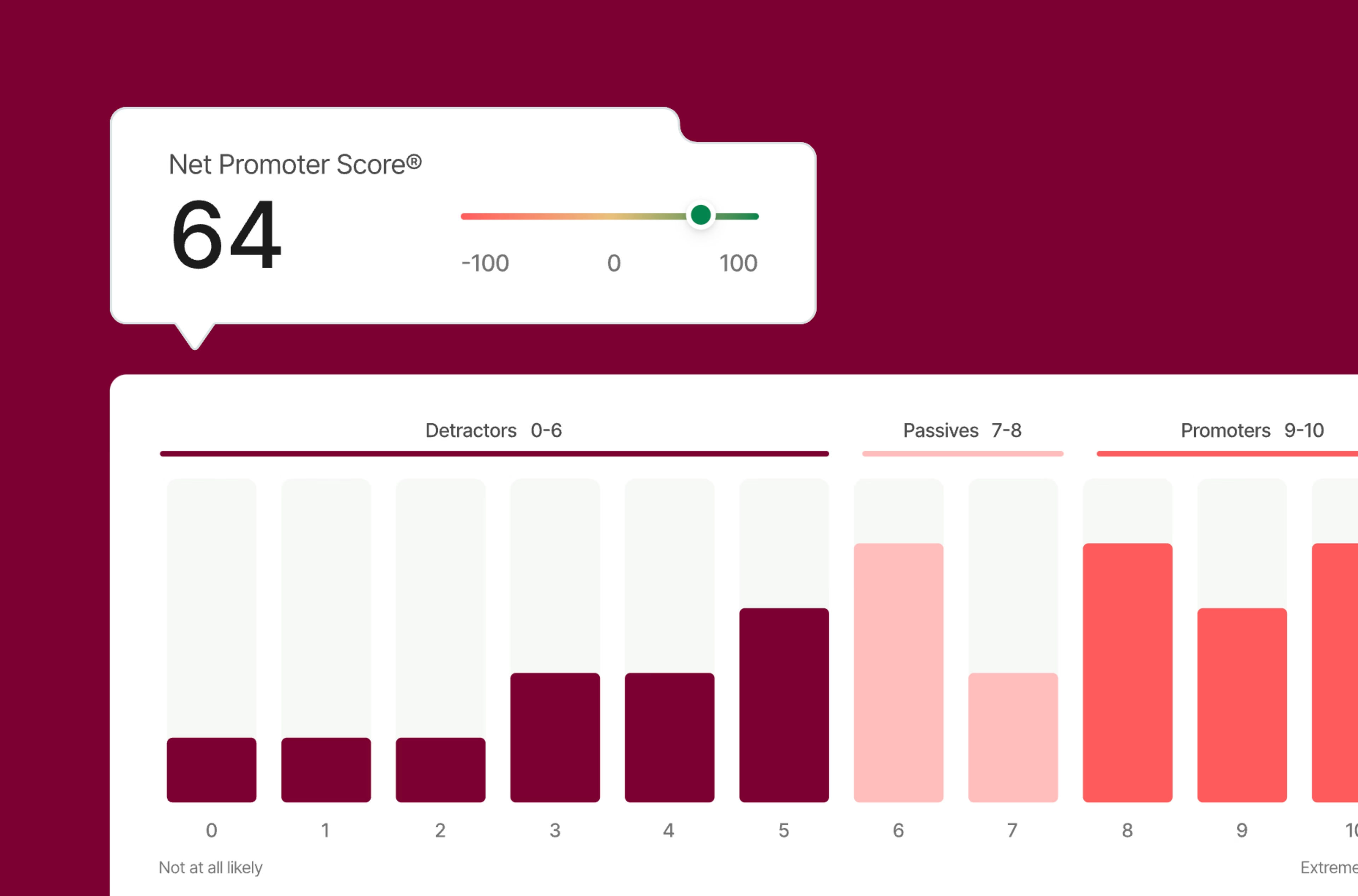The most successful companies out there are customer-centric. They provide products, services, and experiences they know their customers expect, demand—and will love.
These companies aren’t run by psychics (at least so far as we know 👀). They just appreciate how important it is to listen to the voice of the customer (VoC).
In this guide, we explain how you can listen, too. We run through
What VoC is
Why it’s so important and beneficial for your business
How to collect and analyze VoC feedback
The tools you need to collect and analyze VoC data
What is voice of customer?
The voice of the customer is a set of tools and processes designed to collect and analyze feedback at every stage of the customer journey.
The ultimate goal is to understand how customers feel about your business’s products, services, and overall customer experience (CX)—and optimize accordingly.
You can gather VoC feedback from numerous sources, including
Online surveys: deploy surveys (which ask digital customers a series of questions) within your user journeys—ideally after customers complete an important action, such as making a first purchase—to gather quantitative and qualitative data. Set up online surveys to track metrics such as Net Promoter ScoreⓇ (NPSⓇ), Customer Satisfaction (CSAT), and Customer Effort Score (CES)
Feedback buttons: whereas specific user actions trigger online surveys, a feedback button is an always-visible page element that invites users to share their feelings and feedback at their discretion. This in-situ quality makes feedback buttons great for pinpointing specific issues and opportunities in your user journeys.

Contentsquare’s Feedback Collection tool lets you place feedback buttons wherever you like in your experience
Customer interviews: whether face-to-face, on the phone, or over Zoom, this involves proactively reaching out to individual customers to get their take on your product and business
Focus groups: get 8-12 customers together in a room to share their beliefs, opinions, and perspectives about your business (pro tip: provide drinks and snacks)
Customer service: you rarely hear the voice of the customer more loudly than in your contact center, where feedback constantly pours in via phone, email, and live chat
Social media: people talk about your business on platforms like Facebook, Twitter, and TikTok—you can eavesdrop on these conversations or actively engage with them
Online customer reviews: not only are people talking about your business, but they’re reviewing and rating it, too. You need to know what they’re saying—especially if it’s negative
Website and app behavior: this is the feedback customers give you without meaning to. What they say directly tells you how they feel about your experience, but to understand their behavior you need experience analytics tools like zone-based heatmaps, journey analysis, and session replays

Watch user sessions with Contentsquare’s Session Replay tool to understand why users gave you negative, positive, or neutral feedback
📖 Chapter 2 of this guide explores these sources in more depth and explains, where applicable, how Contentsquare helps you collect data from them.
What are the benefits of collecting voice-of-the-customer insights?
A great customer experience drives conversion, retention, and growth. According to a Forbes Insights Report, 74% of customers are likely to buy from a business based on their experience alone.
However, what counts as a ‘great’ customer experience is a moving target. To ensure your CX hits the bullseye, you need to know if it’s meeting your customers’ ever-increasing expectations.
That’s why it literally pays to listen. According to Forrester, when compared to non ‘customer-obsessed’ companies, customer-obsessed companies that put the needs, desires, and satisfaction of their clients at the forefront of their decisions and actions reported
41% faster revenue growth
49% faster profit growth
51% better customer retention
However, the customer-obsessed are rare, with a mere 3% of US companies categorized as such by Forrester in 2024.
To join the ranks of the customer-obsessed, you need to use VoC tools to collect and analyze your customers’ feedback, connect it to their behavior, and optimize your product based on your findings.
Here are five ways your business will benefit as a result.
1. Gather feedback at scale and speed
The modern, digitally driven business environment moves fast, and customer expectations change—and rise—at a breakneck pace.
To satisfy and exceed those expectations, you need to get all the feedback you can and rapidly react to it.
AI-powered voice-of-the-customer technology enables you to hear and address customer feedback, however much of it there is, almost as quickly as it comes in.
💡 Pro tip: use Contentsquare’s AI-powered survey tools to create and analyze surveys in seconds. Here’s how:
Select a survey from 40+ templates and customize it with our intuitive interface to get started or…
Tell the AI assistant what your goal is to get survey questions generated for you
Get an automatic overview of critical issues and opportunities uncovered in the survey with AI-powered summary reports Tag responses and track user sentiment to see how often issues occur

Create surveys using Contentsquare templates—or have AI generate a survey for you
📖 Chapter 3 of this guide is an in-depth guide to voice-of-the-customer surveys. We run through the main survey types, how to set up a survey, and the questions to ask in them.
2. Measure satisfaction—and nurture loyalty
Customer satisfaction is the driving force behind customer loyalty and lifetime value.
Voice-of-the-customer surveys enable you to monitor customer sentiment by tracking metrics such as customer satisfaction (CSAT), NPSⓇ, and customer effort score (CES).
Listening to the voice of the customer helps you improve these scores—and your retention rates and customer lifetime value (CLTV)—by bringing negative feedback to light.
Negative feedback is an opportunity for savvy companies—it lets you know where you need to improve. Plus, if you inadvertently ignore negative (or constructively critical) customer feedback, those customers will feel uncared for.
By contrast, if you take that feedback and respond to it or make changes based on it, your customers will feel heard and become more loyal.

Use Contentsquare to run NPSⓇ surveys
3. Spot and solve issues before they become serious
Our 2024 Digital Experience Benchmark report found that user frustration was up +3.9% in 2023, impacting two in five (39.6%) site visits.
That’s really bad news, because frustrated users are unhappy users. They’re less likely to convert, more likely to churn, and much more likely to share their frustration with their social circle and the general public online.
A variety of issues cause user frustration, such as
Malfunctioning buttons
Slow-loading web pages
Confusing page design and copy
The voice of the customer helps you deal with user frustration and the reputational damage it can do to your brand if it goes public in two ways:
Keep negative feedback private: by allowing customers to vent via surveys (particularly exit-intent surveys) and feedback buttons—rather than on social media
Let feedback guide your product fixes: feedback from frustrated customers points you in the direction of issues so you can solve them before they escalate and affect more users
While many issues can frustrate customers, nothing frustrates them more than feeling unheard.
4. Validate your assumptions, concepts, and designs
Whether you’re launching a new landing page, testing messaging and copy, or trialing a product feature, having access to a steady stream of customer feedback is invaluable.
And there’s no faster method of collecting and analyzing feedback than VoC.
A 4-step guide to testing designs, images, and copy with Contentsquare
Create a ‘concept testing’ pop-up on high-traffic pages that asks users how satisfied they are with your mockup design images
After you’ve received responses, VoC gives you AI-powered summary reports that identify themes, and which you can sort by user sentiment
Once you’ve launched your new design (or feature, or product), place feedback buttons on relevant pages to find out how users feel about it
Whether positive or negative, analyze feedback by watching session replays
![[Visual] Feedback button - How would you rate your experience](http://images.ctfassets.net/gwbpo1m641r7/6zpie5F6Gwd4oyqXaxBfcN/b7e9b7f3bfcc6265f47b5294d8fec319/Feedback_button.png?w=3840&q=100&fit=fill&fm=avif)
Ask your customers what they think of your concepts using pop-ups on high-traffic pages
5. Discover the ‘why’ behind metrics
Metrics like conversion, retention, and churn rate tell you that something’s going well (or not so well) with your customer experience.
But they won’t tell you why you’re seeing upticks or downticks—and you need to know so you can do more of what works and less of what doesn’t.
Voice-of-the-customer insights fill this knowledge gap, uncovering individual customer experiences behind the aggregated metrics and helping you hone in on specific aspects that need to be improved, removed, or replicated.
VoC is particularly good at uncovering the ‘why’ when you combine it with digital experience analytics—which is exactly what our platform’s voice-of-the-customer tools do.
A 4-step voice-of-the-customer strategy
Customer feedback impacts every part of your business. That’s why you need a voice-of-the-customer strategy for your entire organization to rally around.
Use our 4-step VoC framework to make effective customer-driven decisions and updates.
1. Define your objectives
If you were presented with all the customer feedback you could possibly collect about your company, it would be overwhelming, confusing, and you’d have to lie down in a dark room for a few days to recover.
Having a specific goal ensures you collect only relevant data and enables you to get the buy-in from key organizational stakeholders that any successful VoC strategy needs.
Focus on questions about your customers’ behavior that urgently need answering, such as
Our product’s churn rate has grown X% from Q1 to Q2. Why are customers churning?
X% of visitors to our landing page are bouncing immediately. What’s going on?
Start with one objective, take your learnings from this project, and then move on to other pressing questions.
2. Collect feedback
There are numerous ways to collect VoC feedback, including (to recap our earlier list)
Running online surveys (ideally triggered by key customer actions)
Placing feedback buttons on your web pages and app screens
Conducting and transcribing customer interviews
Analyzing your users’ website and app behavior with tools like session recordings
Reading (and responding to) online customer reviews
But which of these VoC collection methods should you use?
There’s no one-size-fits-all answer here—it depends on what you’re trying to collect feedback about. There is a general rule of thumb, though: use a combination of methods.
The more perspectives you gather, the richer, more balanced, and bigger your picture of customer sentiment becomes. (It’s ‘voice of the customer’ not ‘voice of a customer’.)
3. Analyze your feedback
Once you’ve got your feedback data, it’s now time to organize it and analyze it for trends so you know what you need to improve or fix in your experience.
That’s easier said than done, of course, given the volume of feedback you will be dealing with— especially if you rely on spreadsheets to get it done. That’s where VoC tools come in.
A good VoC solution makes it easy for you to collect, organize, and analyze your feedback, by offering you features like
Sentiment analysis that uses natural language processing (NLP) to automatically tag textual feedback responses as positive, neutral, or negative
Automated topic tags (ex: ‘Pricing’, ‘Bug’, ‘Feature request’) which help you filter feedback by keywords used
An interface for viewing and analyzing survey feedback that lets you filter responses by factors such as sentiment, tag, and keywords, and enables you to export and share data (filtered or not)
Speech analytics of recorded customer calls to detect sentiment, identify customer pain points, and flag trends
AI analysis of interview transcriptions and customer service interactions to track sentiment, intent, and recurring topics
Segmentation of feedback data by customer demographics (ex: age, location, gender) and customer journey stage (for example, are they a first-time customer or returning?)
Intuitive visualizations such as graphs, charts, and word clouds, so your teams can quickly spot and share actionable insights
A great VoC solution (like Contentsquare) lets you use digital experience analytics (DXA) tools like zone-based heatmaps and session replay to analyze VoC data. That way, you can investigate individual sessions and determine exactly what’s causing negative (or positive) feedback.
Find out more about how to analyze VoC feedback—and how Contentsquare combines VoC with DXA—in Chapter 3 of this guide.
4. Act on feedback—fast
Having identified areas of your website, app, or product that need improvement, you need to act as quickly as possible to make those optimizations.
Whether you’ve asked them for their feedback or not, when customers signal that something needs to change, they’ll assume they’re being ignored if you don’t quickly make those changes.
Conversely, if they see you’re making the changes they’re crying out for, they feel heard, respected, and valued. And they value your business more.
Ready to turn up the volume on the voice of the customer?
Now that you know what VoC is and what it can do, it’s time to get more practical.
Keep reading our guide to find out how to collect VoC data, analyze VoC data, and set up a VoC survey—and discover the VoC tools you need to hear your customers in high fidelity.
![[Visual] stock photo voc](http://images.ctfassets.net/gwbpo1m641r7/6Wailldy58FtpuPdcqjw9V/a06e2f3beae3f2ba5a816cff8cdedad4/The_Humans_Strike_back.png?w=3840&q=100&fit=fill&fm=avif)
![[Visual] Contentsquare's Content Team](http://images.ctfassets.net/gwbpo1m641r7/3IVEUbRzFIoC9mf5EJ2qHY/f25ccd2131dfd63f5c63b5b92cc4ba20/Copy_of_Copy_of_BLOG-icp-8117438.jpeg?w=1920&q=100&fit=fill&fm=avif)